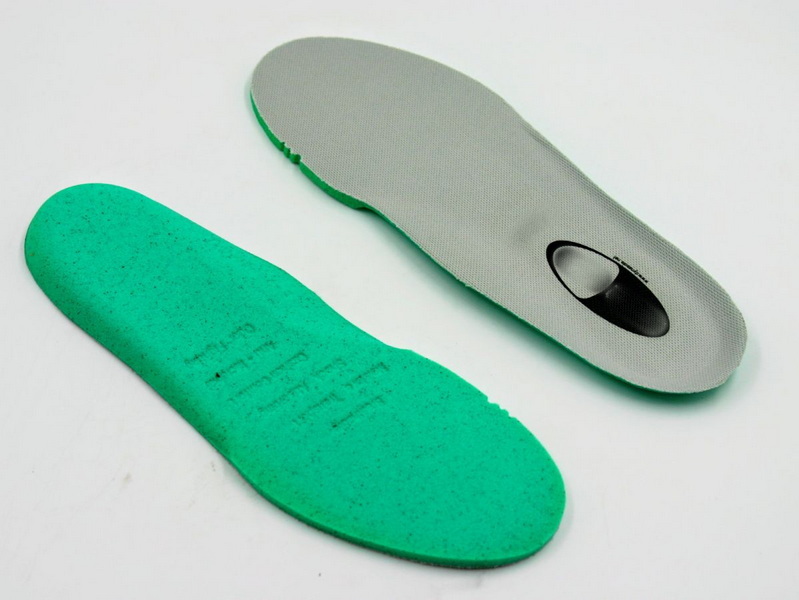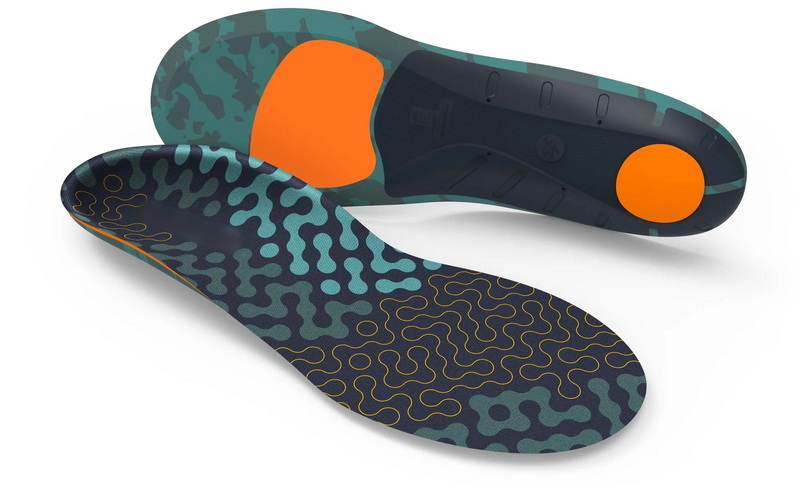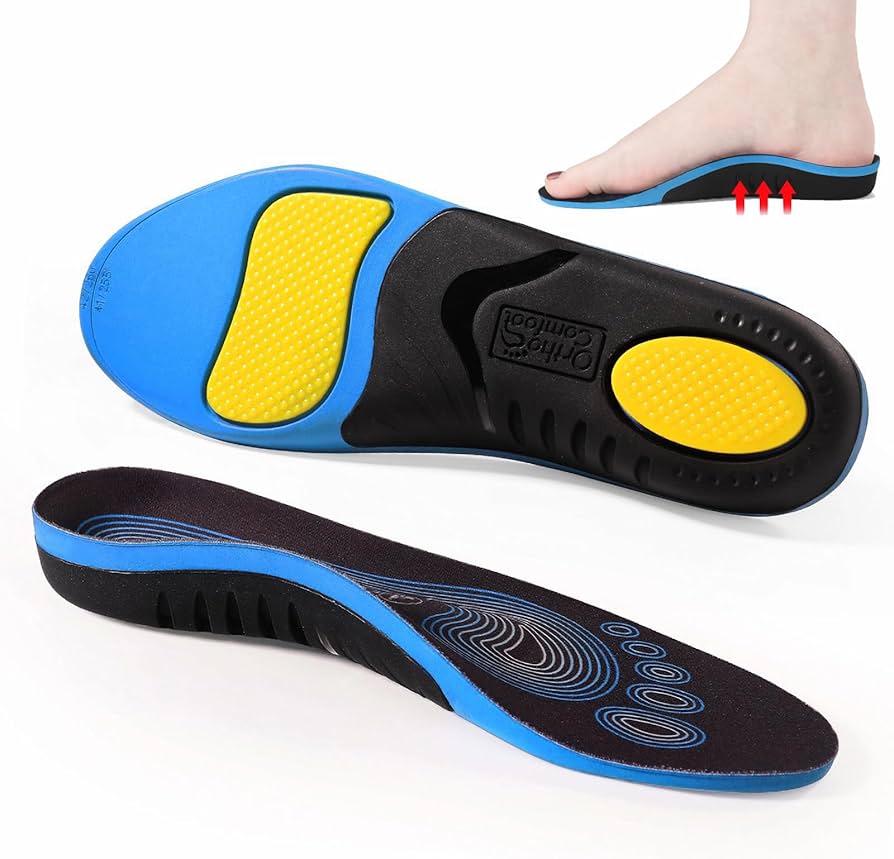Views: 222 Author: Edvo Publish Time: 2025-10-22 Origin: Site











Content Menu
● Why Correct Insole Size Matters
● Measuring Your Foot Accurately
>> Step-by-Step Foot Measurement
● Selecting Insoles by Shoe Type
>> Sports and Specialized Footwear
● Selecting Insoles by Activity Level
● How Shoe Shape Affects Insole Fit
● Material Thickness and Its Impact on Size
● Fitting Checkpoints After Installation
● Common Sizing Mistakes to Avoid
● Additional Tips for Online Buyers
● How Often to Replace Insoles
● Maintaining and Cleaning Insoles
● FAQs
>> 1. What if the insole size doesn't exactly match my shoe size?
>> 2. Can one insole pair suit multiple shoes?
>> 3. How frequently should insoles be replaced?
>> 4. Do men's and women's insoles differ significantly?
>> 5. Should I choose thicker insoles for comfort?
Finding the right size for shoe insoles can completely transform your comfort, posture, and foot health. Whether you are replacing worn-out insoles or customizing footwear for clients, choosing the proper size ensures that your feet—and your customers' feet—receive the support they deserve. This comprehensive guide explains how to measure, choose, and fit sole insoles accurately, so every step feels balanced and effortless.

Wearing shoes with correctly sized insoles isn't a minor detail—it's a crucial aspect of foot alignment and protection. Insoles not only fill the inside of your shoes, they influence how your weight is distributed across your entire body.
When an insole fits perfectly, it:
- Enhances comfort by eliminating pressure points and giving a soft landing surface.
- Improves posture by aligning your foot correctly inside your shoes.
- Supports arch stability, preventing overpronation or flat-footedness.
- Reduces joint strain on knees and hips by absorbing impact efficiently.
- Extends shoe durability by keeping soles from deforming unevenly.
An insole that's too short tends to slip inside your shoe, causing rubbing or blisters. One that's too long can bunch up, especially near the toe area, leading to discomfort. Properly sized insoles keep your feet stable, comfortable, and ready for long daily wear.
Most insole sizes align closely with global shoe sizing systems, but it's important to remember that shoes and insoles are not always built from identical molds. Small differences in brand standards can shift the actual fit slightly.
Manufacturers typically follow U.S., U.K., or EU sizing systems, but some produce range-based insoles such as “Men 8–10” or “Women 6–8.” These can be trimmed down for an exact match.
- Full-Length Insoles: Extend from heel to toe, ideal for replacing original insoles.
- 3/4-Length Insoles: Cover heel and arch but leave the toe area flexible and roomy.
- Heel Cups and Pads: Focus on cushioning the heel; great for those with plantar fasciitis.
- Trim-to-Fit Models: Designed longer, allowing users to cut them according to shoe shape.
Shoes vary in internal volume and toe box shape. Offering flexible sizing helps customers fine-tune their comfort level while still keeping production efficient for bulk OEM orders.
The foundation of correct insole size selection starts with accurate foot measurement. Here's a simple home method used by footwear professionals.
1. Place a blank sheet of paper on flat ground against a wall.
2. Stand on it with your heel lightly touching the wall.
3. Mark the tip of your longest toe and the back of your heel.
4. Measure the distance between the two points in centimeters.
5. Repeat for both feet, since one foot is often slightly larger.
6. Use the longer measurement as your reference for sizing charts.
To ensure optimal comfort, measure your foot at the end of the day when it's slightly swollen from walking. This provides a more accurate reflection of how your insole should fit during normal daily activity.
After measuring, check your shoe's interior length. Some footwear, especially work boots or sneakers, have thicker cushion layers or steel components that reduce insoles' actual space.
Each shoe style demands a different kind of insole support. Here's how to match them appropriately:
Runners need insoles that balance cushioning, shock absorption, and breathability. Look for high-elasticity foam or gel types that stay stable under fast movements. Select an insole exactly matching or slightly smaller than the shoe's listed size for a secure grip.
For daily wear, lightweight foam or memory insoles provide comfortable flexibility. Choose normal thickness to avoid making shoes tight, and ensure the toe edge aligns with your shoe's front.
These shoes are often tighter around the toe, so thinner full-length or forefoot inserts are advisable. Trim-to-fit options give you precision while maintaining a sleek appearance.
Thicker insoles made with EVA or PU foam provide superior temperature regulation and cushioning. If you wear thicker socks outdoors, pick insoles half a size larger to prevent compression during use.
For basketball, cycling, or tennis shoes, go for models with reinforced arches and heel cradles. These support lateral movements, preventing injury and fatigue.

Trim-to-fit insoles include measurement lines underneath that guide users in cutting the right shape. To customize properly:
1. Remove your old insole from the shoe.
2. Lay it on the new insole as a template.
3. Trace around it with a pencil or marker.
4. Carefully trim following the outer edge first, then refine if necessary.
5. Insert the trimmed insole and test the fit; adjust edges gradually for precision.
Avoid trimming too short in one go. It's easier to remove material than to add it back.
Your insole needs may vary based on lifestyle and profession:
- Walking: Lightweight EVA foam insoles with gentle arch support fit best.
- Training or Gym Use: Multi-density foam with strong rebound and sweat control.
- Standing Jobs: Memory foam insoles supporting weight for hours without flattening.
- Outdoor Work: Rugged, waterproof materials with anti-slipping surfaces.
- Athletes: Breathable designs that absorb shock during sudden movements.
As a professional OEM supplier, our factory manufactures specialized insoles tailored for each performance requirement. We offer precise mold designs and size variations compatible with international footwear standards, ensuring reliability across brands and product lines.
Even if shoe sizes match, profiles differ:
- Narrow shoes require slimmer insoles to prevent edge curling.
- Wide shoes need broader shapes to maintain even base contact.
- High-arched footwear benefits from deeper heel cups.
- Flat shoes or loafers often require thinner, low-volume insoles.
When mass-producing insoles for global brands, we calibrate shapes for each shoe type—saving buyers from mismatched fittings and alignment problems.
Thickness can alter how your shoes feel, regardless of length.
- Thin insoles (2–3 mm): Ideal for tight shoes or dress footwear.
- Medium insoles (4–6 mm): Balanced cushioning for casual and sports use.
- Thick insoles (8–10 mm): Maximum comfort but require spacious shoes.
Always account for inner shoe space before choosing denser materials like high-rebound EVA or gel.
After placing the new insole inside your shoes, make sure:
1. The heel sits flat without sliding backward.
2. The arch aligns comfortably with your foot's natural curve.
3. The toes have enough space to move freely.
4. There's no friction when walking or bending your feet.
5. Both insoles feel identical in size and position.
Walk for 10–15 minutes around your home. If you feel tightness or friction, remove the insole and trim slightly near the toe or sides.
1. Guessing shoe size instead of measuring the foot.
2. Ignoring width differences, which can cause side compression.
3. Choosing thick insoles for all shoes, resulting in tight fits.
4. Not replacing old insoles even when worn down.
5. Mixing brands without checking their length charts.
Being attentive to these details ensures a better and longer-lasting experience.
When purchasing insoles online, always review both length and width specifications, as some brands' definitions differ by up to half a size.
- Check whether the pair is trim-to-fit or exact-ready for your shoe model.
- Read about material density—foam and gel types expand differently inside shoes.
- Ask for customized OEM charts if ordering in bulk for your brand, ensuring production molds align with local size preferences.
- Confirm whether the manufacturer provides size calibration for men's, women's, and unisex ranges.
Reliable OEM suppliers can reproduce insoles accurately based on your regional size scale, reducing mismatch risks for wholesale buyers.
Even the perfect fit loses efficiency over time. Most insoles should be replaced every six to twelve months, or sooner if you notice:
- Compressed foam layers.
- Persistent odor or moisture absorption.
- Loss of arch rebound or heel support.
For athletes or heavy users, quarterly replacement ensures performance remains consistent. The right insole size becomes meaningless if cushioning deteriorates prematurely.
Proper maintenance extends insole life and sustains their shape.
- Air-dry them after prolonged use to avoid odor build-up.
- Wipe with a mild detergent cloth instead of submerging in water.
- Avoid direct sunlight, which hardens foam or gel.
- Store pairs flattening side-by-side to retain their form.
These steps help your correctly sized insoles remain effective for months.
Choosing the correct insole size is an essential foundation for comfortable, healthy, and high-performing footwear. By measuring precisely, matching your shoe style, and trimming carefully, you ensure every pair complements your feet perfectly. Whether you're a consumer selecting inserts for daily wear or an international buyer sourcing OEM insoles from China, precision sizing helps guarantee comfort and long-term satisfaction.
A well-fitted insole supports natural weight distribution, enhances balance, and protects from fatigue. The more accurately you size your insoles, the more confidently you'll move every day.

Trim a slightly larger insole using guide lines. If it's too small, use adhesive strips to keep it from sliding—stability matters more than exact length.
Yes, provided the internal lengths are close. However, it's best to assign one pair per shoe type to prevent shape distortion.
Most should be replaced every six months for daily use or yearly for lighter wear. Signs of flattening, odor, or hardness indicate it's time for change.
They differ slightly in shape—men's are broader, while women's have narrower heels and softer arches. Always check labeling carefully before ordering.
Thicker isn't always better. It depends on shoe space and activity level. Choose thickness that complements shoe volume and your comfort needs.